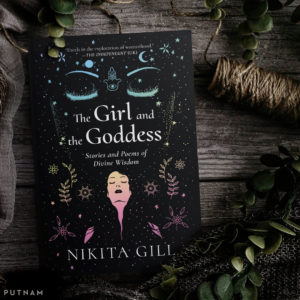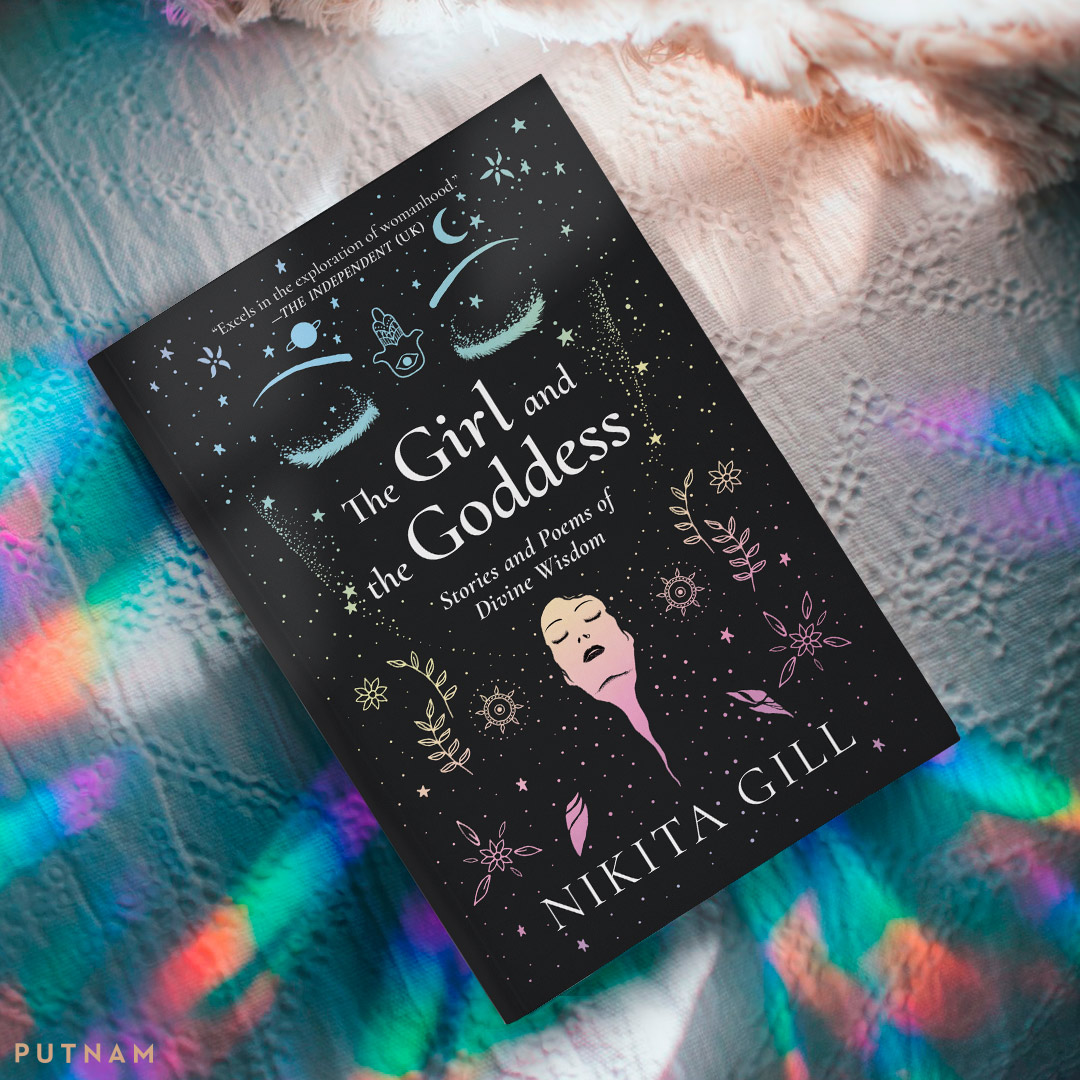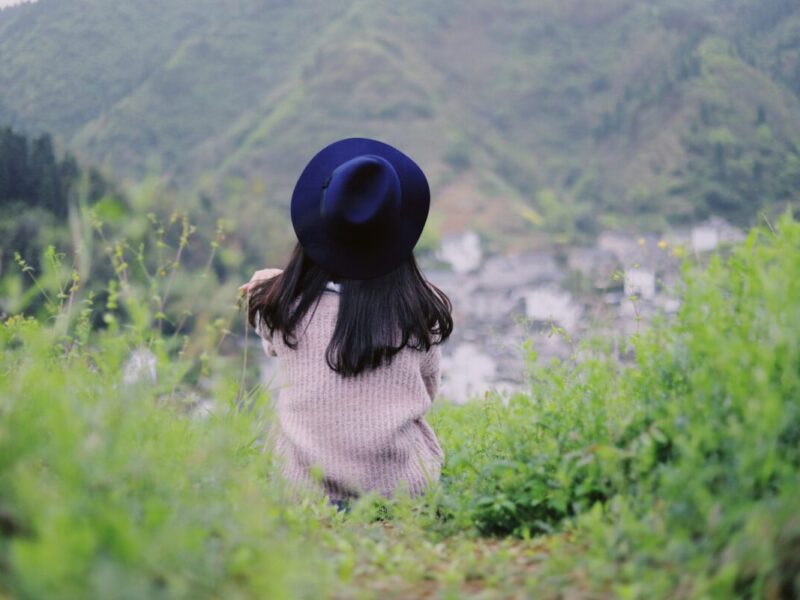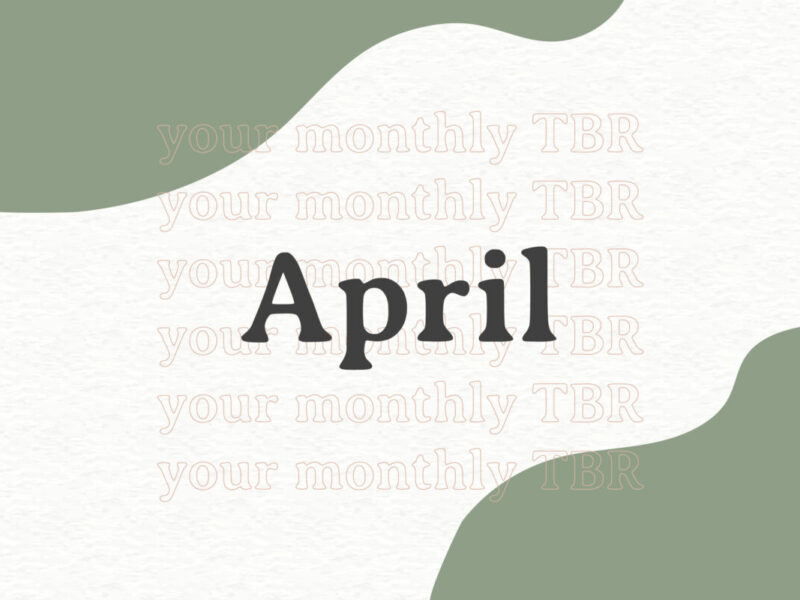Embrace Your Feminist Power with Nikita Gill’s The Girl and the Goddess
Trigger Warning: The content of this article includes potentially triggering content. Themes of sexual assault and childhood trauma are discussed.
The Girl and the Goddess by Nikita Gill is an empowering book for girls, teens, and women of all ages. In this creative verse novel, Nikita reinterprets Hindu mythology as a feminist coming-of-age story, creating a unique approach to the traditional genre. Modern in its form, The Girl and The Goddess introduces female protagonist Paro, and we learn that her story begins with a very unusual birth. While Paro’s mother is pregnant, she prays to the goddess Vaishno Devi, described as “a revolution of a woman / who swallowed a golden forest.”: “In a cave where everything is fragranced with water, / she asks for a daughter instead of praying for a son.” This is how we discover that Paro has a unique connection to the goddesses and gods of Hindu mythology, who visit her at night, tell her stories, and give her advice each time she needs to learn a life lesson.

Photo courtesy of Putnam Books
As we journey through the novel, we learn about Paro’s loving family and friends, and while she has a good upbringing, life is still not easy for her. She experiences many hardships as she grows up: She deals with trauma in her childhood, bullying in her adolescence, and racism and sexual assault in her adulthood. But Paro is strong and has a solid foundation. She finds comfort, healing, and help from many people in her life, including her mother, father, brother, and her grandparents. Most importantly, she finds healing within herself using her love of poetry and art.
We also travel with Paro to different regions and cities, from her Indian upbringing in Kashmir and Delhi to her college relocation to London. As we discover more about the rich Indian culture interspersed throughout the book, we feel a kinship with Paro, who is kind, empathic, and wise. The Girl and the Goddess unravels key insights about the female experience, and while the poems and stories are all interconnected, there are many stand-alone poems that don’t require narrative context. Poems such as “How To Be a Revolution of a Girl,” “For Girls Made of Fire,” and “Tell Your Daughters” are powerful poetic mantras that remind girls and women to use their innate strength and power when faced with the challenges of sexism. The Girl and The Goddess is a magical and mythical story that reminds us to awaken and reclaim the goddess within ourselves.
Veronica Suarez (VS): I love that you blend magical realism with a feminist story, and reading the book reminded me of my experience reading Isabel Allende’s The House of The Spirits, where magical realism has a large influence on the story. You have blended mythology and poetry in other books, but this is the first time you’ve combined them in a coming-of-age young adult novel. How did the idea of combining magical realism with Hindu mythology emerge for you?
Nikita Gill (NG): Thank you for this question. It’s particularly important to me to discuss the process of this book, as it’s so very different from my others. My mother is Hindu and my father is Sikh. Growing up in a dual religion household where I was taught to honor and respect both religions gave me a wealth of knowledge of Hindu mythology as well as the wisdom within Sikhism. My mother read me the stories of the Hindu goddesses when I was a child, and that had a profound impact on me. When I was lost, I would look to them for empowerment, and this is what led me to think what a wonderful story it would make for a little girl, Paro, to find her way through life by taking the hand of the goddesses and deities of her religion.

Nikita Gill | Photo Credit: Peace Ofuré
VS: This is your first novel in verse. Did you decide the structure of the book before you wrote it, or did this structure emerge as you began writing the book?
NG: I absolutely did plan the structure of the book before I wrote it, as it covers 18 years of a life. It was important to know what to write poems about, what events would affect change the most in her, what stories would relate to those events, and what deities would find their way to Paro.
VS: I love the relationship between Paro and her grandmother. What was your inspiration for writing about Nani?
NG: Truly, Nani is based off my own grandmother. She used to sing me lullabies, just like Paro’s grandmother, and her house is very much a sanctuary to me. She’s a generous, kind, wise soul who has always given me strength, AND she makes the most delicious chocolate cake!
VS: Partition appears as a recurring problem for Paro and her family, and you devote many poems to it throughout the book. What was your process in crafting these poems?
NG: My family was deeply affected by Partition. I am both Kashmiri and Punjabi. Both states were deeply turbulent during this time, and my grandparents suffered through it. For a lot of people, Partition was years and years ago, but intergenerational trauma is a force that has lived on. To craft these poems, I spent a lot of time thinking about the first time I heard about Partition and learned through talking to my elders how its aftershocks still resonate across India and Pakistan.
VS: Your book deals with challenging and important social issues that are still considered taboo in many parts of the world. In the poem “The Fruit Seller” Paro gets molested by a stranger after losing her mother’s hand in a market. She is only seven years old when this trauma happens to her. Later, she cannot connect to her mother and feels repressed anger which her mother doesn’t know how to handle. She receives help from Draupadi, who visits her at night and tells her a story about her own rage after being sexually assaulted. What is the significance of Draupadi telling Paro to express her anger, but also control it?
NG: The biggest thing I wanted people to take away from the sexual assaults in this book is that survivors are allowed to be angry. There is a lot of secondary traumatization of survivors in conversations about sexual assault and rape. A lot of pressure falls on survivors to reach for forgiveness before they have even had time to process their anger. The legitimacy of that anger is always called into question by society as a way to guilt survivors into giving it up. Draupadi in the Mahabharata also experiences humiliation and anger of that nature. But Draupadi’s anger is compounded into an uncontrollable rage because she felt no support from her husbands, which then leads to destruction. Draupadi’s story is a caution; it tells Paro to find a way to both feel and release her anger in a healthier way. And not allow it to hurt the people she loves, but also never deny her anger, as it could lead to self-destruction.
“I wrote this book for every girl who wished there were more books for girls who look like her, who are othered, who are not what society expects them to be.”
VS: The book is interspersed with feminist reflections about experiences that girls and women can relate to, such as getting your period for the first time, being bullied, dealing with body image issues, dealing with the male gaze, and dealing with sexism. In the adolescence section, Paro asks the teacher why the school doesn’t include a curriculum that embraces more women authors. Do you wish you had a book like The Girl and the Goddess when you were growing up?
NG Absolutely. I wrote this book for every girl who wished there were more books for girls who look like her, who are othered, who are not what society expects them to be. I wrote this to empower girls who need it the most because that is who I used to be. It’s a book of how powerful the love between women can be. From mothers and daughters to grandmothers and granddaughters to female friendship. How loving each other will save us in the end.
VS: Poetry is used as a way to reveal Paro’s most intimate feelings and thoughts, especially in the teenage section when Paro is learning how to reveal her feelings for her crush, Mahi, and she writes her several love poems. Then in the list poem “Search History,” Paro types many questions into the internet search engine that reveal the beliefs and attitudes that some people in India have towards LGBTQ+ people. What was your writing process for these poems?
NG: Poetry is both about making emotional monuments to particularly powerful moments as well as brevity in capturing them. In that, poets can play so much with structure, and with this book, I truly got to explore just how much of a storyteller a poet can be. The fluidity that poetry gave the narrative helped me structure Search History. I wanted to write one single poem that fully captured the complete heartache of being LGBTQ in India while you are trying to understand it for yourself. We all turn to the internet and books when seeking information. What does the internet respond in turn? I think that is such an interesting way to capture emotion in the digital age.
VS: Which was your favorite section to write: childhood, teenage, or womanhood?
NG: All three cover such different eras in Paro’s life, and the structure of the book is quite circular. A lot of the images in childhood return in womanhood to show how far our lead character had come. Echoes are so important to me when I write a story; foreshadowing is such a powerful tool of narrative. I particularly loved writing about Paro’s relationship with her mother—how it changed from her childhood to her teenage years to when she becomes a woman. I truly enjoyed writing about Paro’s beautiful found family, a group of girls who adore each other. And of course there are the goddesses, the gods, and her lovely Nani. It’s hard to pick a favorite section!
VS: What was the most insightful or surprising thing you discovered while writing The Girl and the Goddess?
NG: How wonderfully fluid poetry is that it can tell the story of a life in such a different and interesting way! I feel like poetry teaches me something so new and powerful with every book I write. It teaches me to push myself so I learn more about what I can do with it. I loved making characters and giving them their own poems, building relationships through poems, how the poems relate to each other, how the metaphors may sing across the pages, narrative tools, and how we can mold them as poets in a novel in verse. This book was so personal and such a joy to write!




